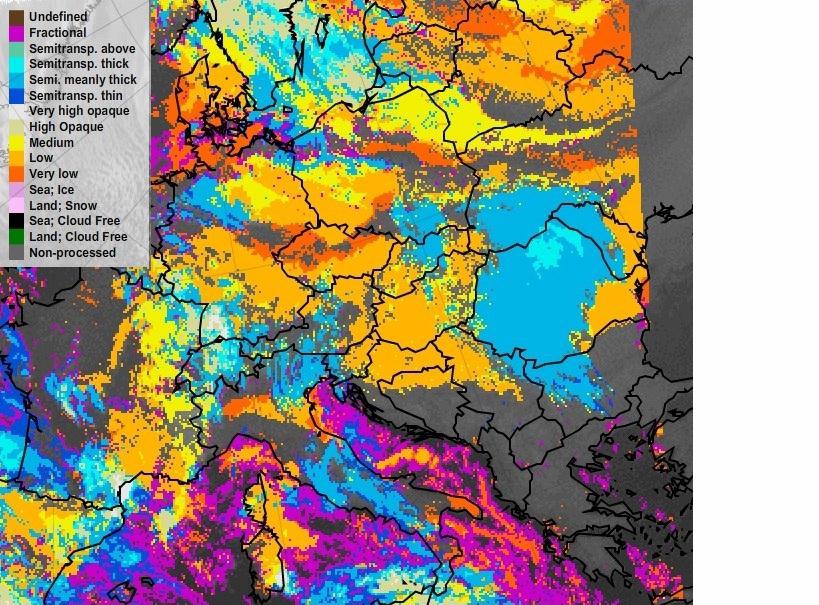Chapter V: Vertical cross sections
Vertical cross sections
- Vertical cross sections
Chapter V
By analyzing the vertical cross section of the ground boundary layer we see that the conditions that are typical for a radiation fog occurrence. We analyzed the fields of potential temperature, relative humidity and cloud cover at the vertical cross section whose coordinates are 30N20E-50N20E. This includes the area of Pannonian Basin (between 45°N and 48°N).
The fields of isentropes – Isentropes are an indicator of atmospheric stability. Higher gradients, where the values increase with height, represent more stable atmospheric conditions, which is characteristic of areas with a temperature inversion.
It may be noted that the gradients at 950 hPa are strengthening on the 19th of November. Maximum stability is achieved the next day, when the layer rises to the level of 900 hPa, indicating the existence of stratus cloudiness.
The field of cloudiness – It can be noticed that there is a high degree of cloudiness (over 90%) directly above the ground, which is typical for the existence of the fog and low clouds. These fields are presented in the following animation. The green line represents the degree of cloudiness and the black one isentropes.
Anim. 5.1. Isentropes (black) and the field of cloudiness (green) in vertical cross-section
Information about cloud cover classification can also be obtained by observing the cloud type product (Fig. 5.2).
Fig. 5.2. Cloud type product.
The field of relative humidity - High humidity in the lower troposphere is typical for fog, while the upper layers are relatively dry. Green lines indicate values of relative humidity greater than 70%, and brown lines are for humidity less than 60%.
Anim. 5.3. Field of realtive humidity at 700 hPa
